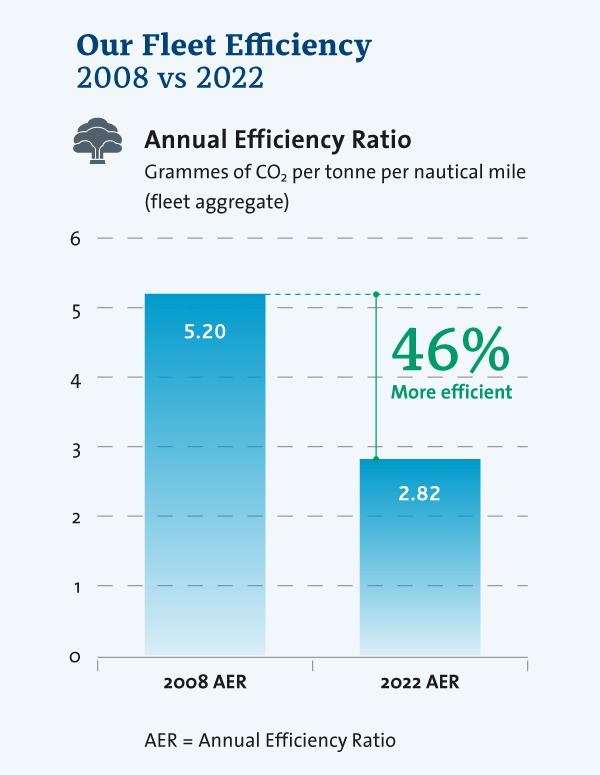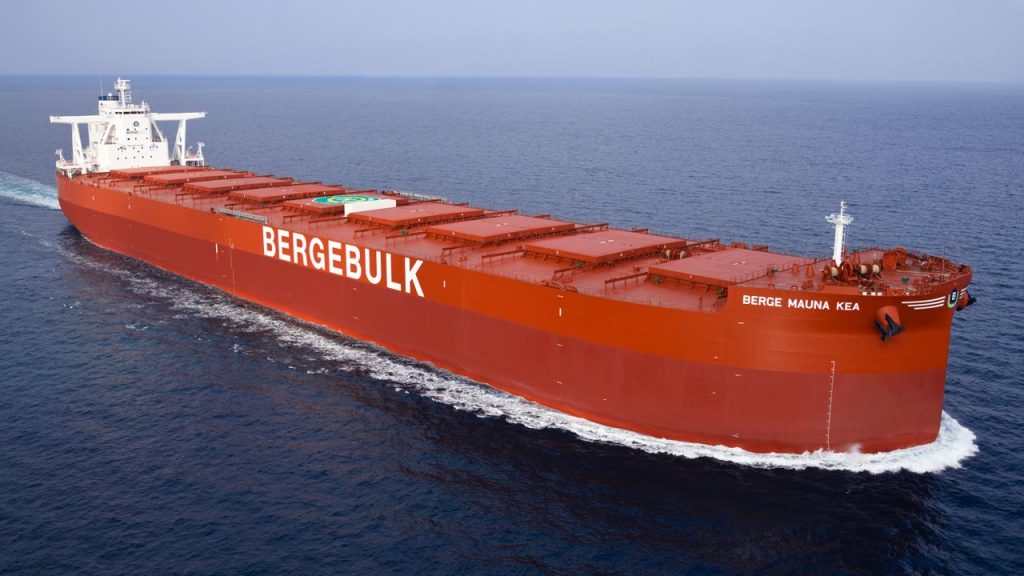Maintaining a relentless focus on improving our efficiency
PILLAR 1
Efficiency
We have maintained a relentless focus on improving our efficiency to date.
Berge Bulk has commissioned a study by ABS to assess its carbon emissions efficiency against a 2008 baseline. Our fleet’s annual efficiency ratio (AER) in 2008 was 5.2 g CO2/tonne mile, and by the end of 2022, it had reduced to 2.82 g CO2/tonne mile. This reduction represents a 46% improvement in our fleet efficiency, putting Berge Bulk well ahead of the IMO target to reduce carbon intensity by 40% by 2030.
We have achieved this by:
- building newer, bigger, more efficient ships;
- retrofitting vessels with energy efficiency improvement technologies; and
- optimising our operational efficiency.
Building The World’s Most Efficient Ships
At Berge Bulk, our focus on innovation has always ensured that we have one of the most modern and efficient fleets at sea. We have been designing our ships to operate more efficiently to reduce our environmental impact for many years.
When selecting a new vessel design for shipbuilding, we make every effort to optimise features such as hull shape, rudder design, fore and aft body lines, and ballast and cargo requirements on specific trading patterns.
Under new IMO regulations, these design improvements are positively reflected in our vessels’ Energy Efficiency Design Index (EEDI). More importantly, these efforts genuinely make a difference to the ship’s environmental efficiency and ongoing operational costs.
Optimising Hull Design
We focus especially on hull design to reduce resistance and optimise propulsion efficiency. This further reduces fuel consumption and pollution. In fact, advanced simulations from shipyards and design houses suggest that improved water flow to the propeller can save up to 8% in propulsion fuel. Research from one of Berge Bulk’s designs indicates that improved hull design can lead to a fuel efficiency increase of 5%.
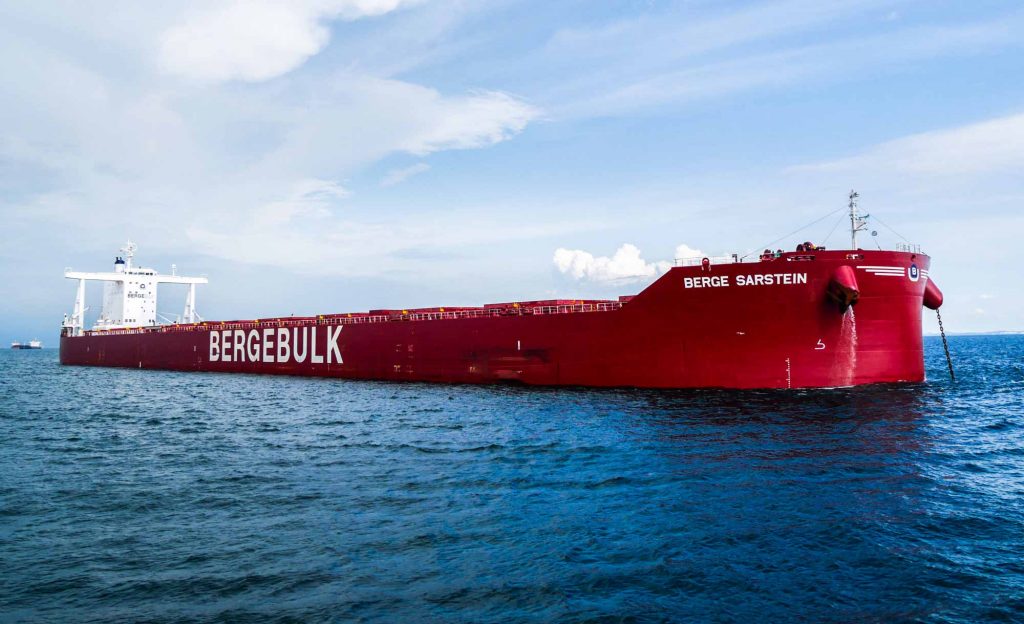
Efficient Engines
Berge Bulk has also chosen exceptionally efficient main engines to propel its new ships. These engines are highly effective, thanks to dynamic settings in the combustion, and they are tuned for ‘low load’ — performing their best at average speeds as opposed to top speeds. In total, this generates significant fuel savings.
Hyper-Efficient Newcastlemax Vessels
Four hyper-efficient Newcastlemax ships will be joining the Berge Bulk fleet over the course of 2024. These sister ships are 300m long and 50m wide with, each with a carrying capacity of 211,599 DWT.
Their modern design makes them extremely efficient. This is achieved not only through a smaller, more efficient main engine, but also through careful consideration of various propulsion system components designed to maintain higher operating speed and optimal manoeuvrability.
With these features combined, we expect the yearly fuel consumption for these ships to be more than 15% less than similar Newcastlemax vessels in our fleet.
Retrofitting Vessels for Improved Energy Efficiency
Berge Bulk has invested heavily to retrofit our vessels with the latest emissions reduction technology to save energy and maximise efficiency.
Propeller Boss Cap Fins
Two of the latest technologies that Berge Bulk has retrofitted onto existing ships are the Propeller Boss Cap Fin (PBCF) and the EnergoProFin. The unique design of the propeller reduces fuel consumption and emissions by up to 5%.
Many of Berge Bulk’s vessels are also equipped with a rudder bulb and fins. The bulb and fins optimise the interaction between the propeller, the ship’s hull, and the rudder — extracting waste energy from the propeller, thus increasing propulsion efficiency.
Mewis Ducts
Berge Bulk has also made a large investment to fit all suitable vessels with Mewis Ducts — a duct positioned ahead of the propeller, and an internally integrated fin system. This technology helps to reduce fuel consumption and resulting emissions by 5-8%.
Over the past year, Berge Bulk’s data analytics team has completed a five-year study of Mewis Duct operations on two dozen vessels. This study has conclusively proved the environmental benefits of these devices, and forms the basis of Berge Bulk’s commitment to installing them fleet-wide.
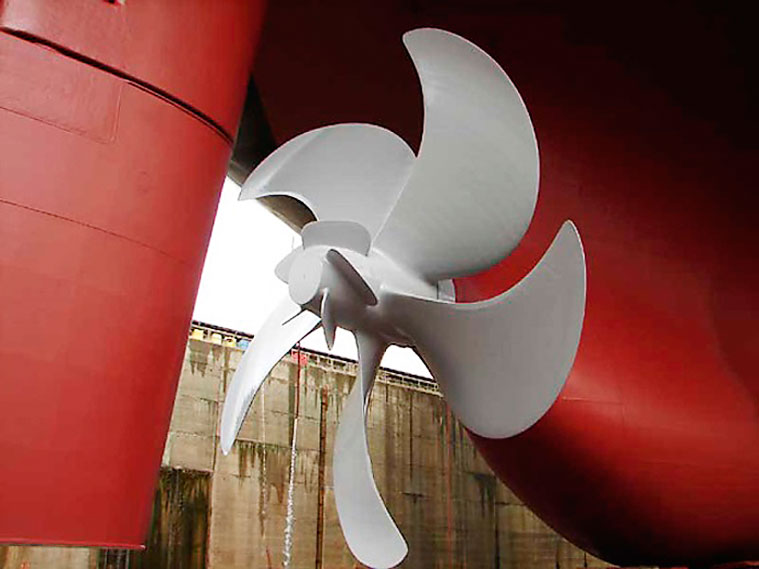
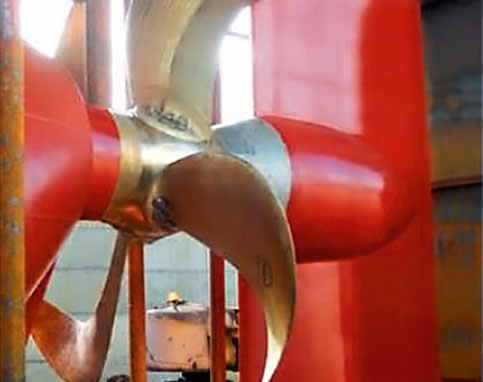
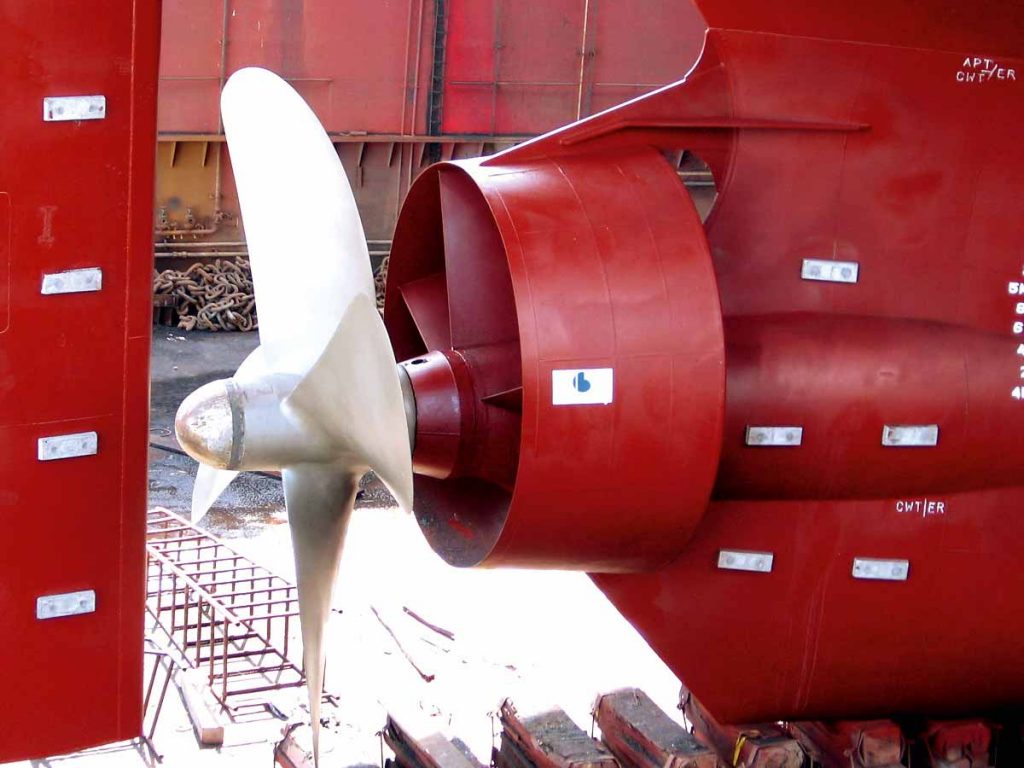
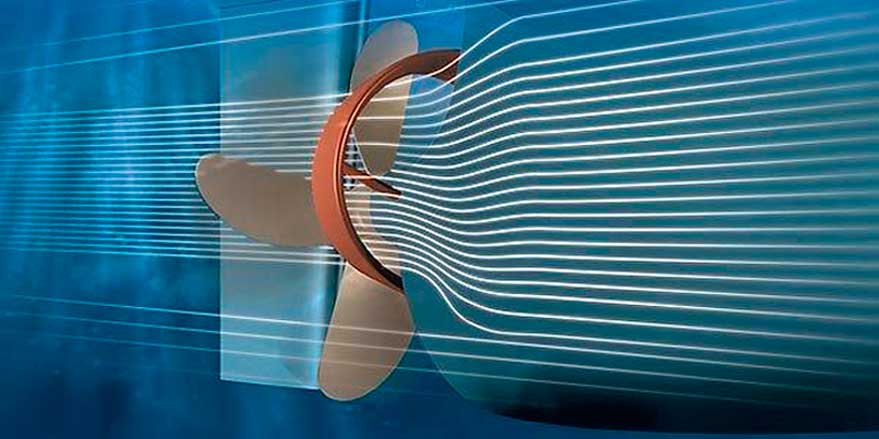
High-Performance Antifouling Paint
Paint is another example of a measure that can improve the fuel efficiency of existing ships. We ensure that our vessels are painted with the highest quality antifouling paint during dry-docking. Paint technology has continued to advance over the years, and high-quality antifouling paint can effectively prevent the build-up of marine growth on the hull. If left untreated, it can increase the resistance of the hull and consequently cause fuel overconsumption. The combination of high-frequency data collection and analysis has also supported us in fully understanding the limits and the opportunities of such high-tech paint products.
Propeller Redesign
Propellers in existing vessels are generally optimised at a higher vessel speed, however — with a changing operational landscape — vessels now operate at a much lower speed. To optimise propeller performance, we make use of computational fluid design (cfd) analysis, which takes into account the interaction of the propeller design with the hull shape. Propeller performance not only impacts the main engine’s fuel consumption, but also underwater noise, and vibration on the hull structure (an extremely important factor for crew wellbeing).
With all of these considerations, the modified propeller can improve fuel efficiency by up to 5%.
Championing Operational Efficiency
For all of Berge Bulk’s ships, operational excellence is a top priority in our drive to reduce emissions.
We do this by improving scheduling and routing, ensuring that the vessels carry the optimal ballast, avoiding dead-weight, optimising trim, ensuring good preventative maintenance practices to prevent hull fouling, and building a culture of accountability through our Less-is-More campaign.

Less-is-More
True change requires a whole team effort, which means attention and commitment from all aspects of our business. That’s why, at Berge Bulk, we created the Less-is-More bunker saving campaign.
Onboard the ships, regular meetings and performance reviews are held to promote the campaign, ensuring that every single Berge Bulk crew member understands their role in the companywide effort to attain energy efficiency, receiving positive reinforcement to do so — whether at sea, during anchorage, or whilst working in port.


